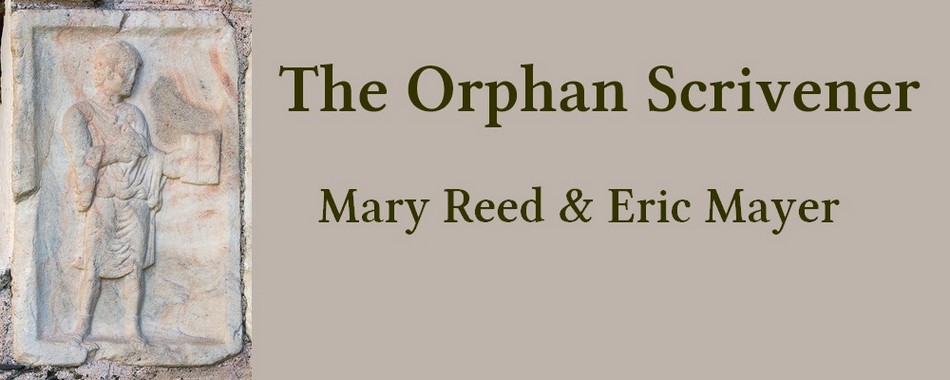MARY'S BIT or BEFORE CEILING CAT
It's not too often we need to turn our thoughts to ceilings, except when they develop brown stains which tend to take on strange resemblances to clipper ships or a galloping horse or whatever other image our subconscious suggests to us, accompanied by that sinking feeling the roof must have sprung a leak. Of course, ceilings also loom large in certain mysteries, ghost stories, and horror films, where the strange stain up there is scarlet and...drips.There was a ceiling mystery of a different kind a year or two back when the extension housing our bathroom developed a leak. The solution was to reroof it and in the process of doing so, the builder discovered that the original roof was still in place below the one visible to the world, so the bathroom in effect had a false ceiling. Not uncommon, of course, but in this case there was a gap between the two roofs a couple of feet high. Needless to say, with a pair of mystery writers in residence the discovery triggered a discussion of how such a situation could have come about and how it could be integrated into a novel. Certainly small items could be temporarily concealed there but as a hiding place for a living person -- my immediate thought until I realised how small the height of the secret place was -- it would be useless. Naturally bodies also sprang to mind, along with remembrance of Kipling's ghost story The Return Of Imray, in which a ceiling is used to great effect.
In a house we previously inhabited there was a false ceiling in the basement. Our cat Sabrina sometimes hid up there and for all we knew slept there as well. She reached it by launching herself from a sink up to a window sill where she liked to sit and survey the outside and then from there into the space between the ceiling and the floor of the room upstairs. This was well before we discovered the intertube's famous Ceiling Cat and so now, catching a glimpse of its frowning feline face reminds us of Sabrina, long gone though she is.
Earlier still my family lived in a Victorian maisonette which still sported traces of faded glory. Though built for the working class, its front room (the equivalent of a parlour) had been constructed with a ceiling featuring a circle of decorative mouldings centred around its original gas light. Not as elaborate as the ceiling compared to a frosted wedding cake in The Great Gatsby perhaps, but striking in an ordinary home. As an aside, let me mention the seance in Ruined Stones, the second Grace Baxter novel, took place in a room modelled after the one just described, so while the maisonette itself is long gone, along with the entire terraced street and its neighbours, the ceiling and other architectural features remain remembered in print at least. While on the topic, the maisonette where Grace takes lodgings is a mirror image of the one in which my older sister began married life, complete with a low sloping ceiling at one end of the kitchen so steep it made the space beneath it virtually useless as living space.
Speaking of low ceilings, they are one of the most striking features of the house where we now live. It is no exaggeration to declare that downstairs a light bulb can be changed without the need of a step stool and while admittedly we are both taller than average for our genders according to official statistics, we still did not expect to occasionally bang our knuckles on the ceiling upstairs when disrobing or getting dressed or being careless when putting on or taking off a sweater.
The low head room upstairs also means a ceiling fan is out of the question since installing one would be dangerous to our heads, although in a different way than Alice found when she drank from a magic bottle -- a danger in itself, one would think, since she did not know what it contained. In any event, the result was Alice found her noggin pressed to the ceiling and was forced to stoop to avoid a broken neck. Another instance is to be found in A Christmas Carol, when Scrooge and the Ghost of Christmas past revisit Scrooge's former employer Mr Fezziwig, first seen sitting at a high desk. It is noted had he been two inches taller his head would have knocked against the ceiling. Similarly in Crime and Punishment a room is described as low-pitched enough that a man over average height would feel uneasy about the possibility of knocking his head against its ceiling.
So much for the visible. But what of the invisible? Gutenberg.org, that wonderful source of fiction etexts, offers a collection entitled Famous Modern Ghost Stories. Edited by Emily Dorothy Scarborough, its contents include Fitz-James O'Brien's haunting (in both senses of the word) tale What Was It? After reading it, short or tall, you may well find yourself feeling uneasy and glancing up at the ceiling more than usual.
NECESSARY EVIL or THE BSP TICKER
News of blogs and interviews and similar appearances is scanty on the ground at the moment -- would the same also applied to the last fall of snow, still so frozen footprints hardly register on it! -- given all our available time is currently devoted to completing John's latest adventure. We expect to send it to Poisoned Pen next month, so there should be more news of it in our April newsletter. Stay tuned!
